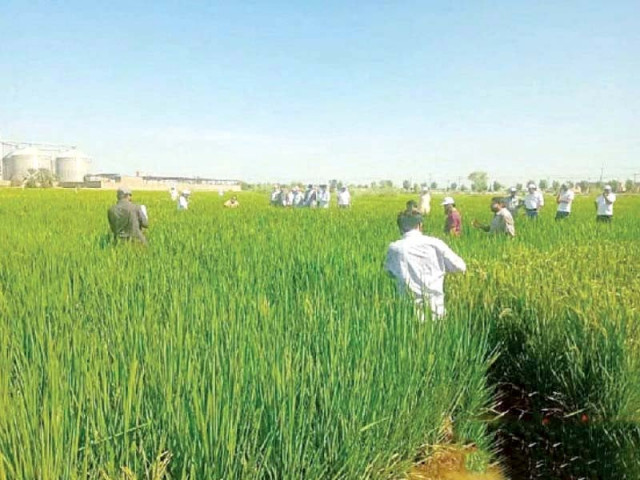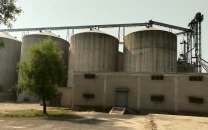Rice exports likely to soar 40%
USDA estimates Pakistan will export 4.8m tons of rice, fetch extra $1b

The US Department of Agriculture (USDA) has projected that Pakistan’s rice exports will jump by over 40% to 4.8 million tons in the current fiscal year, signalling that exporters will fetch an additional $1 billion in overseas sales.
On the other hand, the bumper wheat harvest and a turnaround in cotton output lessen the reliance on imports, reducing the need for foreign exchange significantly in fiscal year 2023-24.
The agriculture sector is anticipated to play a pivotal role in reviving economic growth to the targeted 3.5% in FY24.
The spike in rice exports may come on the back of access to new export markets like Russia and Mexico. Exports to Indonesia are already on the rise.
India’s ban on its rice exports to stabilise prices in domestic markets will also pave the way for Pakistan to ramp up shipments to overseas markets.
Pakistan has seen a turnaround in rice production, which is estimated at 9 million tons in FY24 compared to a poor harvest of 5.5 million tons in the previous fiscal year, when floods damaged large swathes of agricultural land.
USDA, in its latest Pakistan-specific report titled Grain and Feed Update, said “this 4.8-million-ton export forecast is on a par with the record 4.8 million tons of export achieved during 2021-22, when production was at a record high of 9.3 million tons.”
The 4.8-million-ton export projection was slightly lower than the global agriculture information department’s forecast that put rice exports at 5 million tons.
It also revised down rice export estimate to 3.4 million tons for marketing year 2022-23 (Nov-Oct) compared to the previous forecast of 3.7 million tons.
Citing Pakistan’s official statistics, the USDA said rice exports totalled $2.14 billion in previous fiscal year 2022-23 compared to $2.51 billion in FY22, depicting a decline of $364 million.
In terms of quantity, rice exports dropped by 25% during FY23. Rice (including Basmati) exports were 3.717 million tons in FY23 against 4.97 million tons in the previous year.
Wheat output
USDA said its 2023-24 wheat supply and demand forecasts were unchanged at 33.07 million tons and 30.20 million tons, respectively. “While the government has not yet issued any public tenders, private importers have bought at least 300,000 tons of Russian wheat.”
The agency estimated that wheat production would be 28 million tons in FY24 compared to 26.40 million tons in FY23, adding that production of the crop would remain high in next fiscal year 2024-25 based on the availability of water.
Carryover stocks of wheat from the previous year and imports will sum up supplies at 33.07 million tons in FY24. According to the Pakistan Bureau of Statistics (PBS), the country imported wheat valuing at $1.07 billion in FY23 compared to $795 million in FY22.
Cotton production
According to the Pakistan Cotton Ginners Association (PCGA), the cotton production surged by 71% in the first two and a half months of the current season and reached 5.02 million bales compared to 2.94 million bales in the same period of last year.
The turnaround in cotton harvest was sparked by favourable weather conditions like no flooding that had ruined 34% of crop in the previous fiscal year, an industry official remarked.
The government has estimated cotton production at 9 to 10 million bales this year compared to around 5 million bales in the prior year, which will lead to a reduction in imports. Pakistan’s total cotton consumption requirement stands at 15 million bales.
According to the PBS, cotton worth $1.68 billion was imported in FY23 compared to $1.83 billion in FY22.
Last week, the Ministry of Finance said “if the cotton crop continues to thrive, it will augur well for the economic outlook.”
Published in The Express Tribune, October 4th, 2023.
Like Business on Facebook, follow @TribuneBiz on Twitter to stay informed and join in the conversation.



















COMMENTS
Comments are moderated and generally will be posted if they are on-topic and not abusive.
For more information, please see our Comments FAQ